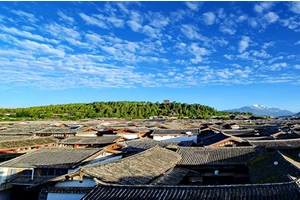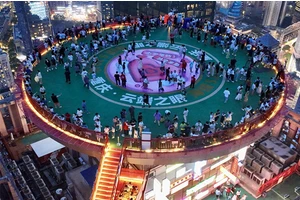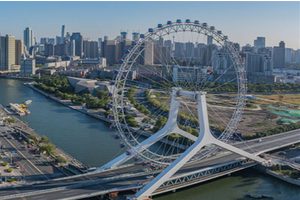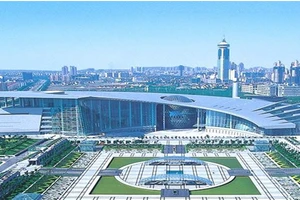Tourist attractions in taerqi town
How many people are there in Tal Gas?
Ta 'erqi "is a transliteration of Mongolian, meaning" fertile ".It was founded in January 1985, located at the southern end of Daxing 'anling, and is the southernmost town in Yakeshi City. The geographical location of Taerqi Town is 120 39 ′-121 32 ′ east longitude and 47 49 ′-48 09 ′ north latitude, and the town government is located 125km away from Bolin Railway. Taerqi borders Zhalantun City in the southeast, Ewenki Autonomous Banner in the west and Chuoyuan Town in the north. Ta 'erqi Town belongs to the continental monsoon climate zone, with cold and long winters, warm and rainy summers and short time. The annual average temperature is -3.2℃, the highest temperature is 37℃, the lowest temperature is -45℃, the annual average rainfall is 470.2 mm, the frost-free period is about 100 days, the annual average sunshine hours are 2,511 hours, and the perennial dominant wind direction is northwest wind. Ta 'erqi Town was originally under the jurisdiction of Chuo 'er Town. In January 1985, a part of it was designated as Ta 'erqi Town by the administrative area of Chuo 'er Town, with a total area of 1,029 square kilometers, a planned area of about 7 square kilometers and a planned control area of 15 square kilometers. There are 6,269 households in the town, with a total population of 20,069 and 10 ethnic groups, of which Han nationality accounts for 91.6%, Mongolian nationality accounts for 4.5% and other ethnic minorities account for 3.9%. Ta 'erqi Town has three neighborhood committees, namely Tahong, Tazheng and Taqiang, and there are Chuoersen Industrial Company, Railway Station and Chuoersen Police Brigade in the town.The enterprises and institutions affiliated to the town include Taerqi Office of Industrial and Commercial Bank of China Yakeshi City, Taerqi Insurance Company, Taerqi Industrial and Commercial Branch, Taerqi State Taxation Branch, Taerqi Local Taxation Branch, transportation management station, road maintenance inspection station, court, police station and traffic police team. The economy in Ta 'erqi Town is dominated by forestry, supplemented by animal husbandry. Relying on forest resources, forest harvesting and intensive processing of forest products are developed. Wooden bead products, floor boards and sanitary chopsticks are exported to all parts of the country, and bracken, mushrooms and other undergrowth resources are green and pollution-free, which are deeply favored at home and abroad. Livestock breeding cows, fattening cows, pigs, sheep, etc. The town construction of Ta 'erqi Town has its own style and characteristics. In 1995, it was listed as one of the pilot towns for the construction of small towns in China for 500 years by the Ministry of Construction, and the first batch entered the top 100 towns in Inner Mongolia Autonomous Region in the same year. In 1997, he entered the Union-level civilized demonstration town and the Union-level health town; In 1998, it was listed as one of the ten demonstration towns in the whole region by the autonomous region, and it was the key town of the national June 25 project construction; In 1999, it was rated as an advanced town in rural construction in China; In 2000, it was rated as an advanced town in rural construction by the autonomous region, and as an advanced town in small town construction by the Union Office. In the same year, it entered the central town of small town construction in Inner Mongolia Autonomous Region; In 2003, it was rated as a three-star civilized town in the autonomous region.
Is Gerdan a rebellion? So it belongs to Qing?
To know whether Gerdan (general writing: galdan) is a rebellion, we must first find out what the Great Qing Dynasty and Mongolian tribes are like. There are two kinds here. The first one was defected very early, such as the Horqin Department, which became affiliated as early as the late Jin Dynasty. "This dynasty Longxing, Mongolian Horqin department took the lead in joining, and both Chahar was destroyed, and the departments came down one after another. So. . . Set up a hospital to unify it. "
So later, the Qing Dynasty divided Mongolian tribes into inner Zazak Mongolia and outer Zazak Mongolia according to the relationship between distance and distance. Inner Zasak Mongols were Mongolian tribes that joined the Qing Dynasty earlier, which not only had a high political status, but also retained certain military power. Later, the ministries attached to it were called Outer Zasak Mongolia.
Junggar is not inner Zazak Mongolia, but outer Zazak Mongolia. In the third year of Shunzhi (1646), twenty-two leaders of various ministries of Weilate (including Junggar) once jointly paid tribute to the table, and the Qing court gave them armor and bows and arrows, ordering them to rule over various ministries. -From the point of view of the Qing Dynasty, this determined the master-slave relationship, and the Qinghai-Tibet Plateau and Xinjiang were formally incorporated into the sovereign territory of the Qing Dynasty.
Of course, both inside and outside are the people of the Qing Dynasty. Therefore, the Junggar Ministry is a branch of Willat, and resisting the instructions of the Qing Dynasty is to change the master-slave relationship between Willat and the Qing Dynasty, and to change the relationship between the Junggar Ministry and the Qing Dynasty. It is indeed a rebellion.
Galdan came to power in charge of the Junggar Department, which happened in the ninth year of Kangxi. Eight years later, he marched into Qinghai. At this time, he was actually an enemy of the Qing Dynasty. For this reason, he was afraid that the Qing army's soldiers in Gansu would break off and leave halfway. But in terms of formal procedures, he was still a courtier of the Qing Dynasty, not treason, but only an internal contradiction.
At this time, galdan got the support of++Lama. After he sent troops to occupy Hami and Turpan, he was named "Boshuo Ketuhan" by++Lama. In the 19th year of Kangxi, at the request of++Lama, he sent troops to help the "White Mountain School" and "Black Mountain School" on Tianshan South Road to fight and seize southern Xinjiang.
In the 26th year of Kangxi, galdan rose up and conquered Khalkha Mongolia in two ways. Please note that at this time, he threatened to borrow Russian troops for aid. Khalkha Mongolia was defeated by Russian troops and galdan. At this time, internal contradictions had been intervened by external forces.
But by this time, galdan had not completely turned against Kangxi. In the twenty-seventh year of Kangxi, Beijing sent a first-class bodyguard to arrive at him and ordered him to stop fighting; At the same time, the troops were recruited. Especially after learning that galdan soldiers had arrived in Hulunbeier, Emperor Kangxi transferred troops from Shengjing to join Horqin Department. This time, galdan took the initiative to withdraw from Hulunbeier.
Of course, it was impossible not to turn against each other by this time, and Emperor Kangxi gathered an army and gathered Mongolian forces such as Tuxie Tuhan, who was defeated by galdan. In May of the 29th year of Kangxi, galdan really defeated the front-line troops led by Alani, the minister of the Qing Dynasty, with the support of the Russian colonialists, and his rebellion was completely a fact.
So, Emperor Kangxi decided to personally levy, and a big war began.
The domestic economy of Targas is dominated by forest products and intensive processing of forest products, supplemented by animal husbandry and mining industry. Diversified economies have developed together. Targas is rich in resources, and the natural grassland is excellent. The main tree species are Larix gmelinii, Betula platyphylla, Betula alnoides, Populus davidiana and so on. There are 35 kinds of wild animals, including national first-class and second-class protected animals, and rich in wild plant species, including edible mushrooms, auricularia auricula, Hericium erinaceus, day lily, bracken and other pure natural green foods, as well as red medicine, ginseng, ganoderma lucidum, trollius chinensis and bracken. Between the green trees and the grass, there are also wild berries such as Deuce and Vitis amurensis, which are rich in vitamins and trace elements. There are more than 70 kinds of mineral resources with abundant reserves, mainly including iron, molybdenum, marble, lead, zinc, copper and silver.
Over the years, with the continuous efforts of the people of all ethnic groups in the town, the work of Ta 'erqi Town has achieved remarkable achievements and considerable development. In particular, great achievements have been made in the construction of small towns, including Yuxi Park, Wuting Mountain, Jiexin Park, Huimin New District Square and Triangle Square. Targas region is rich in tourism resources, including Tiger Cave, Diaoyutai, Valley Line, Four Seasons Glacier, Daheishan and other tourist attractions.
Prev: Travel poster
Next: Xiaozhou village tourism






